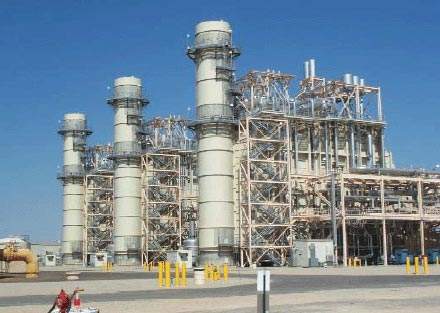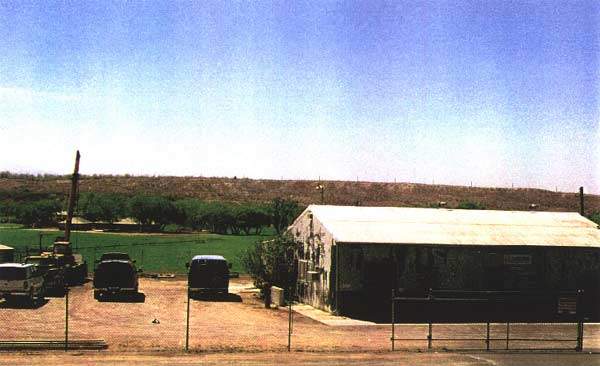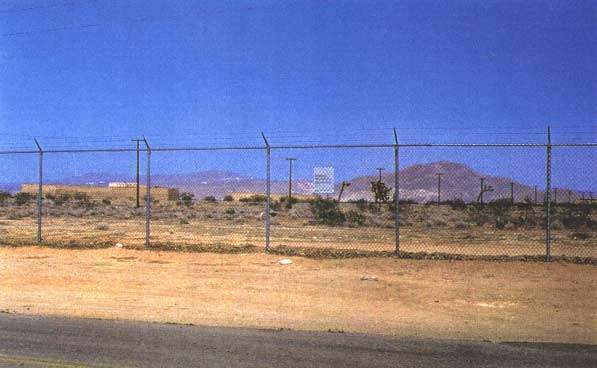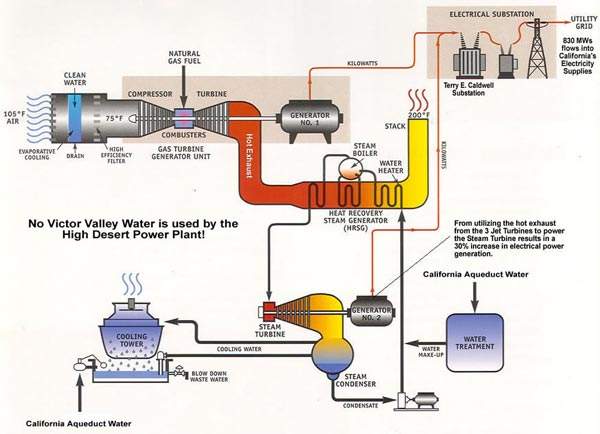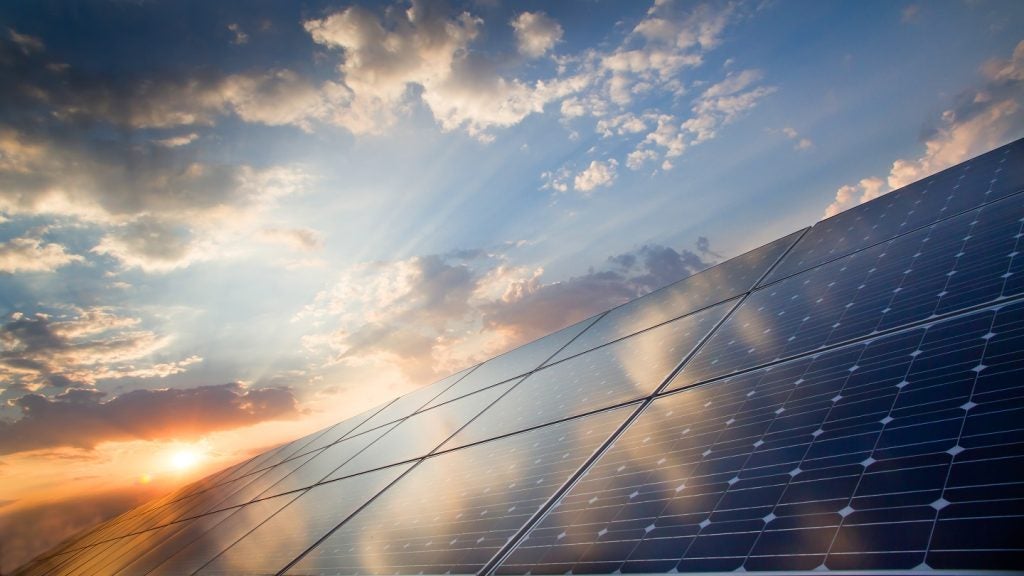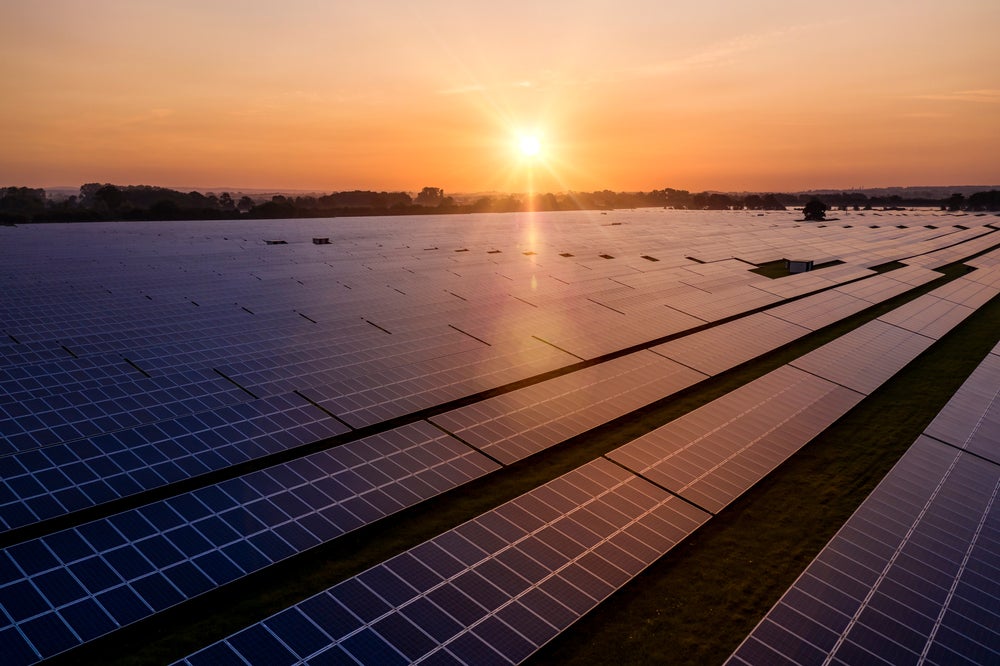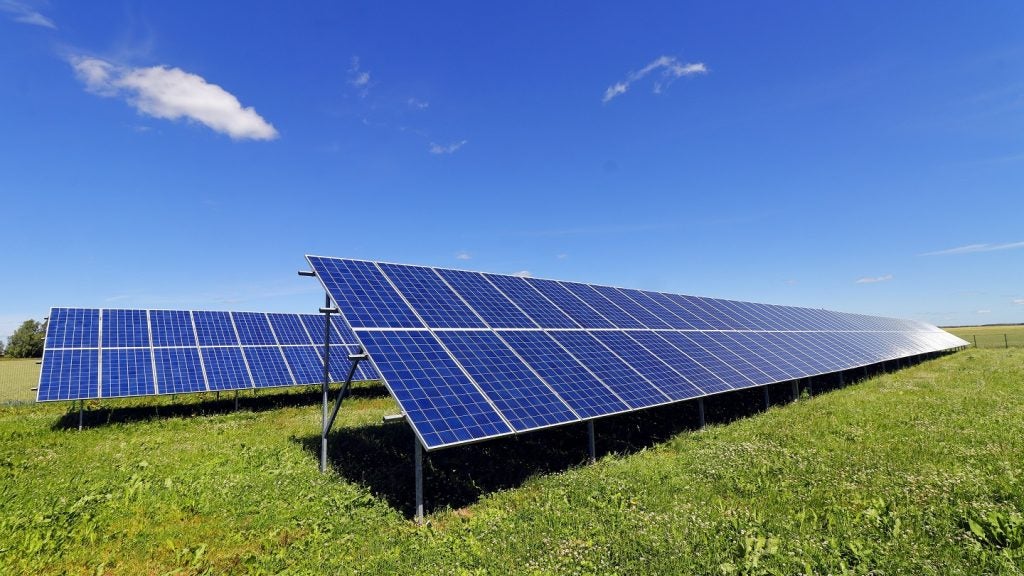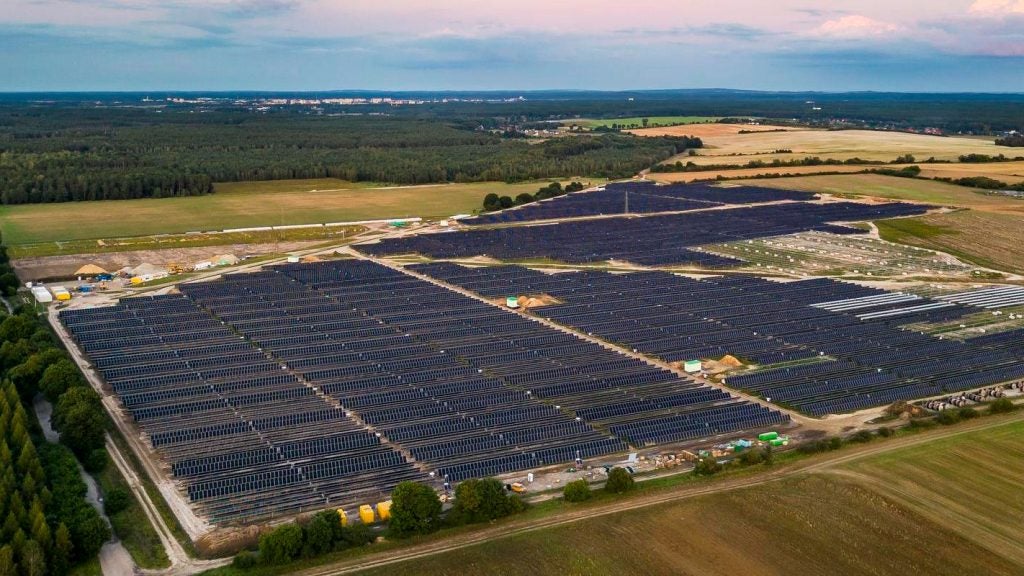With an output of 720MW, the High Desert Power Project (HDPP) was the first new major power plant for Southern California in more than a decade. In 2003, the project was finally completed after having been in development since the mid-1990s.
The HDPP uses Combined-Cycle Gas Turbines (CCGT), comprising three gas turbines and a steam turbine. It was named Power magazine’s 2003 Plant of the Year because of HDPP’s ‘innovative approaches to project partnering, air emissions offsetting and water management’.
No applications for major power plants were brought to the California Energy Commission before HDPP in the 1990s as the industry waited to see how deregulation would be restructured. The state then licensed over 13,000MW of natural gas-fired generation in the first few years of the century. Some, however, did not go ahead with construction).
However, California then suffered from a significant supply / demand imbalance. Given these electricity shortages, the Constellation Energy Group said that it will market power from the plant within California. Therefore, the High Desert power plant was widely welcomed.
California’s hydroelectric facilities
At the time of construction, California’s fuel mix was divided between natural gas (50%), hydro (10%), nuclear (16%), coal (11%), renewable sources (12%), and others (1%).
The plant was built on a 25-acre site within the north-west corner of the Victorville, on a portion of the Southern California Logistics Airport, formerly known as George Air Force Base. HDPP is the centrepiece of Victor Valley’s economic redevelopment.
The plant was finally approved in May 2000. As financing was not fully confirmed, the Kiewit Industrial Company, Omaha, did not begin construction until 1 May 2001. The plant began commercial operation in April 2003.
HDDP power plant approval and cost
Obtaining permits in California for a project like High Desert involved a thorough and comprehensive review of all aspects of the project. High Desert received all necessary permits from federal, state and local agencies. The HDPP was approved in May 2000 and had an estimated cost of $350m.
High Desert’s electric generating technology is based on clean-burning, natural gas-fired combustion turbines operating in a combined-cycle mode. This is the most energy-efficient and least environmentally damaging type of fossil fuel power plants of this size.
CCGT power production is more efficient
The High Desert power plant has three natural gas turbines, whose exhaust heat is harnessed to power a steam turbine. The plant produces electricity to serve 500,000 people.
HDPP uses one-third less fuel and has lower air emissions than the other power plants that were operating in the Los Angeles Basin. The output is between 720MW-750MW.
The plant’s three combustion turbines are Siemens Westinghouse W501FD2s, each nominally rated at 177MW. Alstom supplied the triple-pressure HRSGs. These were integrated with a Coen duct burner, a selective catalytic reduction system (Babcock-Hitachi), and a CO catalyst (Goal Line Environmental Technologies). A 323MW Toshiba reheat steam turbine is housed in a separate turbine building. The Westinghouse Ovation digital control system allows a single operator to start up and shut down the plant.
Water treatment from SPW
The primary water source for the plant is State Project Water (SPW), supplied by the Mohave Water Agency (MWA). A portion of the SPW water is treated to state water quality standards and injected into the local aquifer to be used as a backup water supply.
US Filter met the water treatment needs of the power plant. The integrated technologies provide clarification, media filtration, membrane concentration, chemical disinfection, and sludge dewatering to meet the requisite capacity and requirements of the power facility and the aquifer banking system.
Cooling tower blowdown
For the treatment of cooling tower blowdown, US Filter supplied softening microfiltration, followed by high recovery reverse osmosis for pre-concentration of the blowdown. The blowdown is treated to a dry solid in a crystallisation system to achieve the zero-liquid discharge objectives.
US Filter also supplied a continuous deionisation system to supply demineralised water for the power plant and chemical feed systems, as required to support the water treatment plant.

